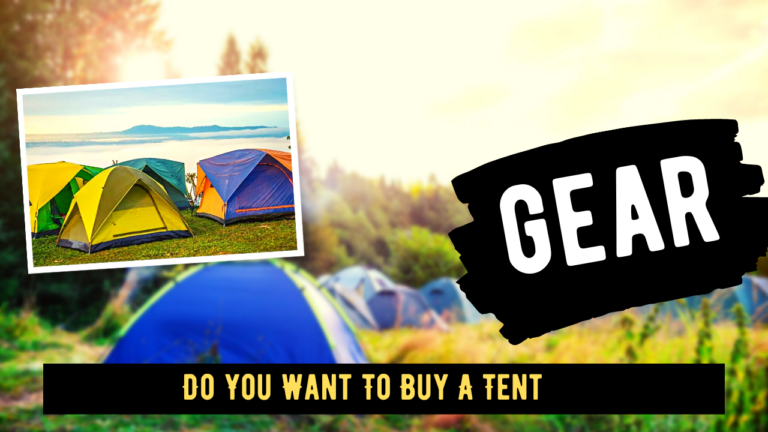Choosing the right camping tent can be a challenge. So read this tent buying guide, which will answer your tent-related questions.
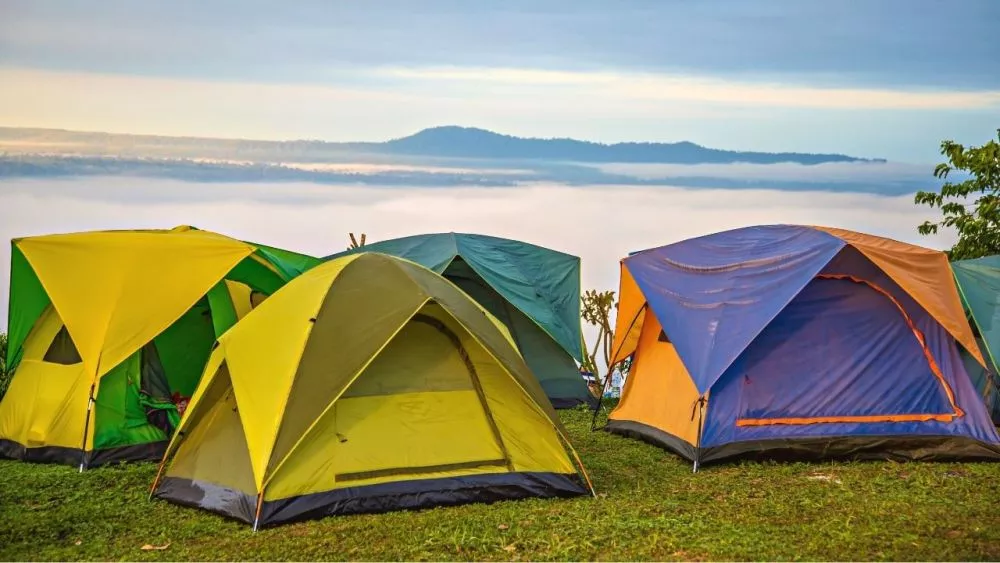
Camping is not only a popular pastime during the holidays, but all year round.
Whether you’re casting a line and camping by a river or pitching your tent at a campsite, camping can be an adventure.
Unfortunately, choosing the right camping tent can sometimes be a challenge.
So, in this article, I have put together a tent buying guide that will answer your tent-related questions.
Among other things, the types and designs, the advantages and disadvantages of the different tents and styles, and questions to ask yourself.
In this guide we cover pop up tents, tents, throws, family tents, rooftop tents, canvas tents and more.
What You Should Consider When Choosing A Camping Tent
There are numerous tent brands, tent sizes and designs, tent types like throw overs, trekking tents, instant tents, prices, different qualities, features and more.
So that you can limit your selection at the end of the guide, we will now go through a few questions one by one.
This will narrow down the choices and give you a clearer idea of what kind of tent you need.
Here are some questions about it:
Note: Take a look at the top list of the most popular products that preppertidbits.com visitors regularly buy. Status as of (December 30, 2024)
| LifeStraw ® Personal Water Filter | Buy on Amazon |
| Light my Fire Ferro Rod Fire Starter | Buy on Amazon |
| REXBETI Folding Saw | Buy on Amazon |
| Morakniv Companion Outdoor Knife | Buy on Amazon |
| Bushcraft 101 – Wilderness Survival | Buy on Amazon |
How Often Is The Camping Tent Used?
Are you an avid camper who goes fishing most weekends ? Or do you explore the wilderness in remote places and pitch your tent there?
Or do you only use the tent once a year to set it up in the garden for a child’s birthday party?
The fact is: If you go camping regularly, then you should buy a quality tent.
You don’t have to spend a fortune, but it will wear out, so a branded tent should be the right choice.
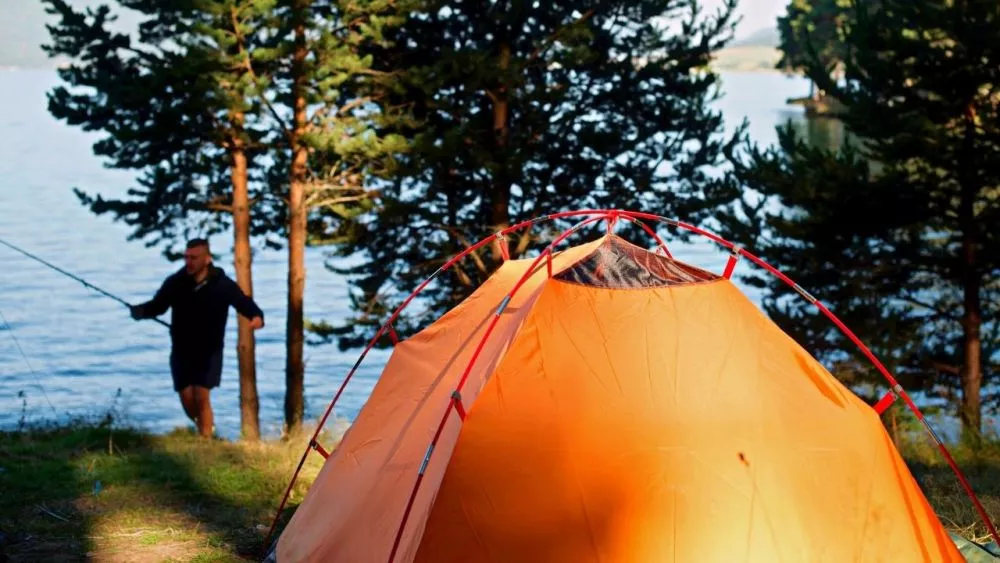
The constant setting up and packing down of the tent can be tiring. So if you camp every free minute, an instant pitch tent could be worth it for you. This saves a lot of time, especially if you value your free time and/or fishing time.
Or if you’re camping with the kids, you’ll spend less time setting up the tent (and less swearing, too) and more time exploring the wilderness .
On the other hand, if you only camp occasionally, a cheap tent will do.
Since you may only be using the tent a few times, a cheaper tent from the discount store might do the trick.
How Many People Will Sleep In The Tent?
This question can be very tricky. Even though tent manufacturers state that the tent can accommodate that many people, most don’t take into account that people don’t really want to be crammed together like sardines in a tent.
Campers also want to store some clothes, pillows and sleeping pads in the tent. This means that the quoted six-man tent has just enough space for three people.
In addition, different tent brands have different standards, which makes comparisons difficult.
But a rough rule of thumb is to take the tent manufacturer’s berth count and halve it. So a 10 man tent can accommodate 5 people with equipment.
Among other things, I use the UNP Camping Tent for my family . It is advertised for 10 people, but we two adults and two small children occupied the tent completely. I can’t imagine 10 adults sleeping in there for several days and storing gear.
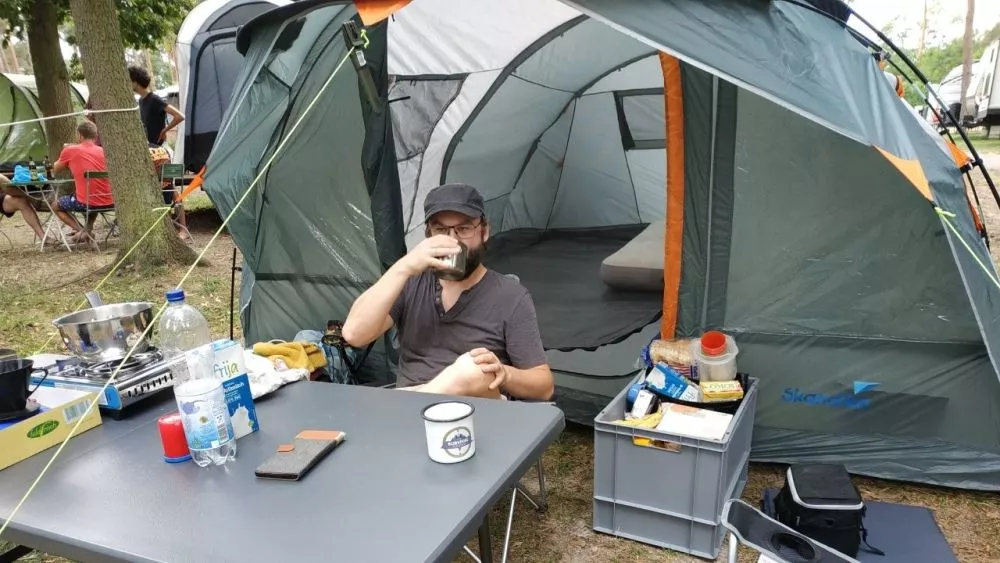
It’s great when you can see the tent on display at a camping store – like Decathlon.
Have your loved one and kids lie down in the tent to see if you have adequate space (of course, it gets awkward when the kids wrestle in the tent and fight over who gets to sleep where in the store).
But it’s better than buying the tent and realizing that a 4 person tent is really only good for 2 people and a little gear.
If you use camp beds or camp beds, they also take up a lot more space. Some inflatable air mattresses also take up a lot of space in the tent, so be mindful of the type of sleeping gear, mattress, and sleeping pad you use.
Unfortunately, as tents get larger and offer more sleeping space, weight and volume also increase. Do you have a trailer or roof rack to store the tent in, or will it pack in the trunk of the car?
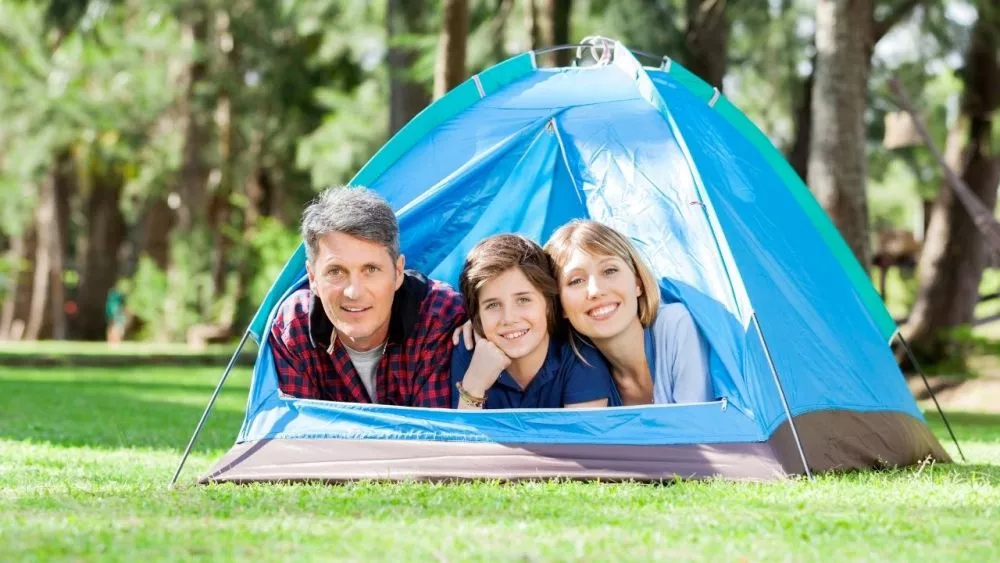
Camping in a small, cramped tent in hot weather isn’t fun – you just want to get out of there. So it’s worth thinking about how many people will sleep in the tent with equipment.
Larger tents may have separate rooms. Some good tents have zips on the dividers so you can open the tent into one large room. Or you can pull up the zippers to create separate spaces. This is also useful if you want to change or check for ticks .
Do You Hike With The Tent?
Do you have to carry the tent over a long distance? Is your car close by or are you ultra-light hiking for miles? Or do you drive up to the campsite and grab the tent from the trunk of the car?
So tent weight is essential for hikers, but not so much for car camping.
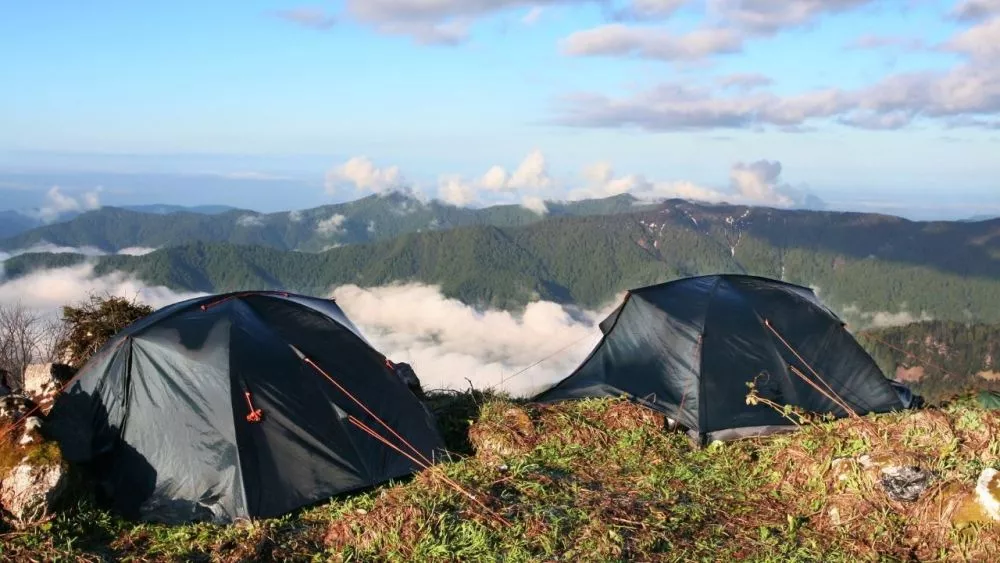
Obviously the larger family tents are going to be heavy. Tent materials such as canvas and steel poles will be heavier than a modern age new lightweight tent material and poles.
If grandpa is still getting his tent out of the basement, then you can almost be sure that it will be difficult.
Another thing to keep in mind when using roof top pack racks: some larger tents can get extremely heavy. Therefore, check the load capacity of your car roof.
If you are adventurous when camping, for example by cycling, canoeing or bikepacking , then the weight of the tent is also a decisive factor.
In Which Climate Zone Will You Set Up Your Tent?
Do you want to camp in the Himalayas in winter? Or do you want to camp somewhere warm in Italy in summer?
The location where you will be camping is another factor to consider when choosing a tent.
A wet and windy place requires a solid tent to keep you warm while camping . A good canvas or polyester material from the better brands of tent will stand up to bad weather better.
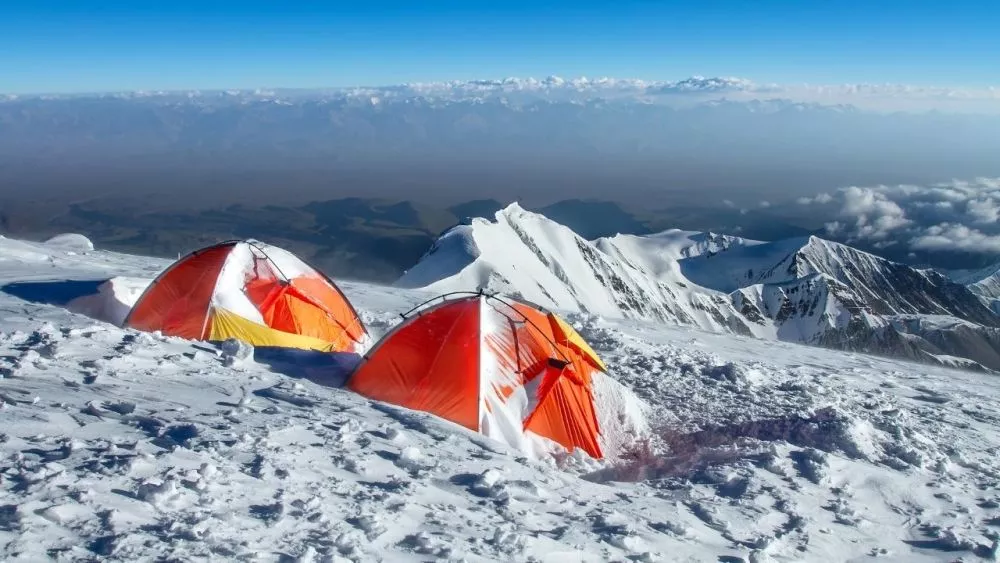
Some tents also have an outer tent. In a two-piece tent with flysheet, the flysheet is laid over the main tent mesh and groundsheet, and the flysheet protects the tent from rain. The mesh fabric of the main tent allows for breathability and airflow, while the flysheet protects the tent from the elements.
A canvas tent will likely be one piece. In windy areas, a heavy canvas will help minimize wind rattling the tent.
A cheap, low-quality tent can be torn by the wind and have more problems with condensation inside the tent. A cheap one-piece tent can accumulate a lot of moisture because it is not well ventilated in hot or cold, humid weather.
Also, the inferior materials can leak. The construction process and poor design can also cause the tent to collect water and leak in wet weather.
How Easy Is The Tent To Set Up?
Sometimes outdoor stores will have a video recording screen or online retailers will have a video showing how a particular tent is set up.
The tent manufacturers set up the tent and you can see what needs to be considered when setting up and how easy it should be. A great promotional idea and these videos work particularly well for pop up and quick pitch tents.
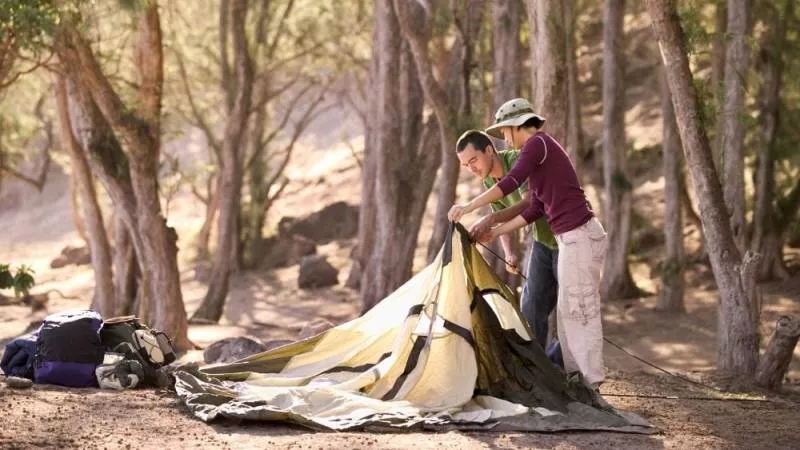
My favorite tents are the quick-erect models. These models can be set up quickly and in minutes or less.
The pop-up tent and instant tent are good if you don’t have a helping hand to set up the tent.
The instant tents also save a lot of time and are practical if you arrive at the campsite late at night. Or when it rains that you don’t get soaked.
A downside to quality tents is that some of them can be expensive. However, the cheaper models can have weak points in the connections.
Family tents, on the other hand, are inexpensive but require more time to set up. If you have an extra pair of hands or are taking a little extra time, the family tents are awesome.
High-quality poles, tunnel tents, dome tents and other family tents have proven themselves and are solid. The heavy poles ensure stability and withstand bad weather.
How Much Does A Tent Cost?
We’ve talked about the quality, size, brands and type of tent, all of which affect the price of the tent.
Another factor we discussed was how often you will be using the tent.
If you only use the tent a few times a year then one of the best tents might not be worth the money.
However, if you go camping all the time, then an expensive tent could be very worthwhile. The three tents listed below are larger family tents from well-known manufacturers that are in the upper price range.
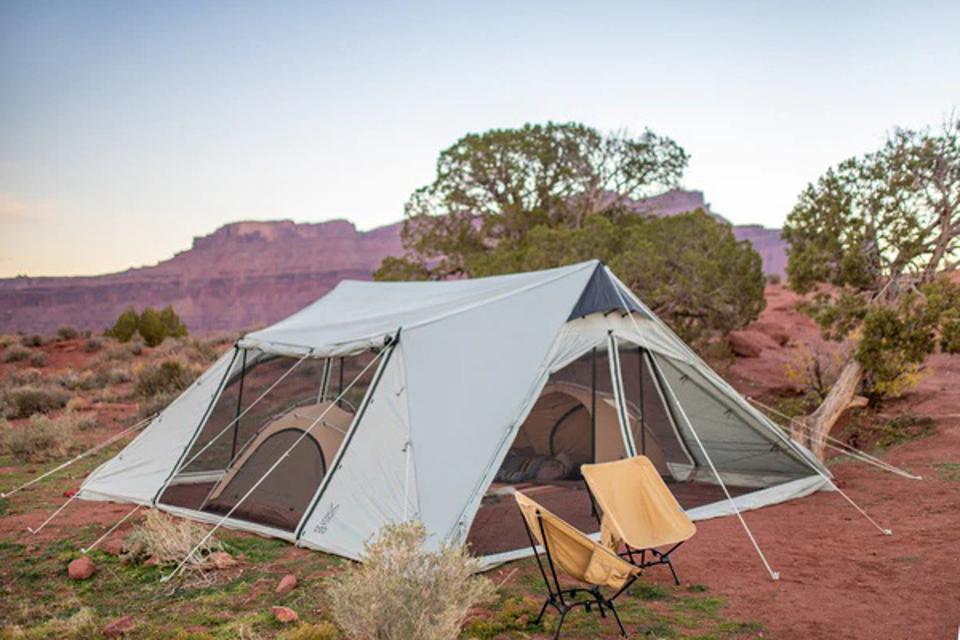
As you have probably already guessed, the prices for the tents can vary widely. From the large, high-end family tents that can cost more than $1000 – to the small dome tents for two people that cost around $50.
So by considering the issues of size, how often you will be using it, etc., you can work out a budget for the best value tent that suits your circumstances.
Between these lower and higher price ranges there are a variety of tents that are really cheap. It is worth watching the sales days before Easter, the Christmas holidays and Black Friday etc.
How Should Your Tent Be Ventilated?
Have you ever woken up in a damp tent only to find your sleeping bag is wet due to insufficient ventilation? If you haven’t experienced this yet, then you’re lucky.
If the tent is not properly ventilated or the vents cannot be opened, there will be wet, damp and condensed on different parts of the tent depending on the weather conditions in your camping area and other inconveniences. Consider buying a tent with good ventilation and a rain cover.
Also, make sure you can minimize condensation by choosing a tent with large and well-placed vents.
How Should Your Tent Be Equipped?
Tent features refer to how comfortable, comfortable and luxurious you want your tent to be. Even tents with the same capacity values are equipped very differently.
- Volume – The amount of space in your tent. Slanted walls mean less space (but also less weight).
- Floor Dimension – The layout of the floor area. Most camping tents are rectangular, but some are tapered to reduce weight.
- Peak Height – The highest point of a tent. Use this as a starting point for how tall the tent is inside.
- Wall Shape – The shape of a tent’s walls is generally the best indicator of its livability. The more vertical the walls are, the more vertical space is available.
- Room Layout – The layout of the interior space of a tent. Some family camping tents come with room dividers to create separate living areas.
- Doors – How many doors do you need? While small families will do fine with one door, those camping in larger groups may want a tent with more doors.
- Windows – Tent windows offer more than just a view of the outside. They also let in light and ventilate the tent. Light coming in through windows can make a tent appear larger.
- Ventilation – When you pack a lot of people into a tent, it quickly becomes stuffy. Many camping tents come with mesh windows, ceilings and doors to allow for improved cross ventilation.
A Look At The Different Types Of Tents For Camping
Now that we’ve talked about some price ranges, tent sizes, sleeping places, and frequency of camping trips, let’s dive into each tent type and design.
Traditional Tents
You may remember them from your parents or grandparents. It usually consists of an inner and outer tent and sticks that can be put together. Then set up the tent according to the instructions.
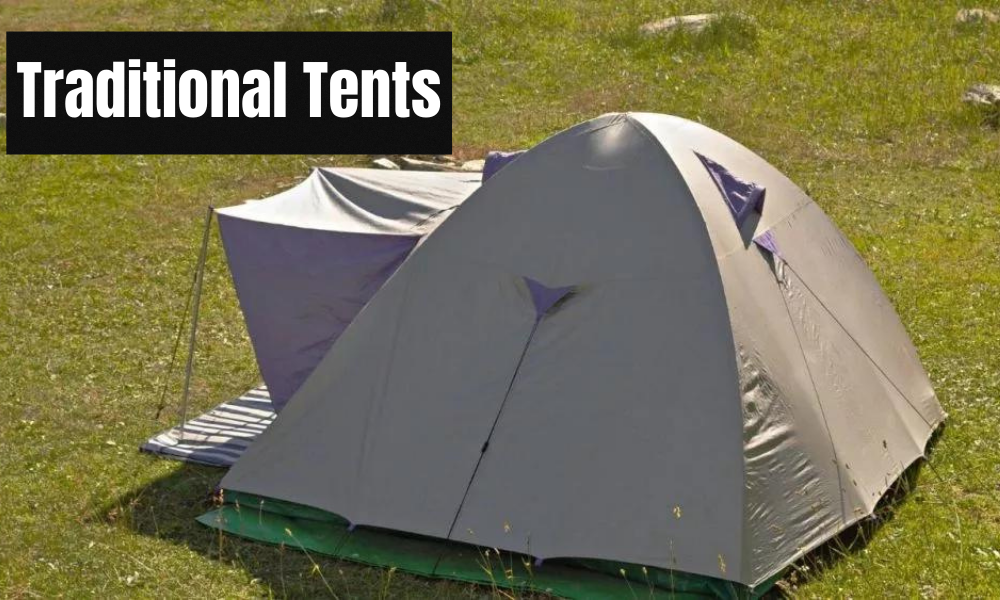
The traditional tent is a good compromise between price and a wide range of sizes. They can range from a sleeping size for two to spacious tents for twelve.
Most tents have a separate outer tent that makes the tent waterproof, allows for good ventilation and prevents problems with condensation during the night.
While not as quick to set up as pop up tents or instant tents, they are relatively easy to set up and have a practical design.
These tents are probably the most common type of tent, coming in a variety of brands, sizes and prices to suit most campers.
Pop-up Tents
Pop-up tents are great for quick pitching.
Most are small dome tents that sleep one, two, or three people and are quick and easy to set up. When you take them out of the carrying case, they are ready to use and set up straight away.
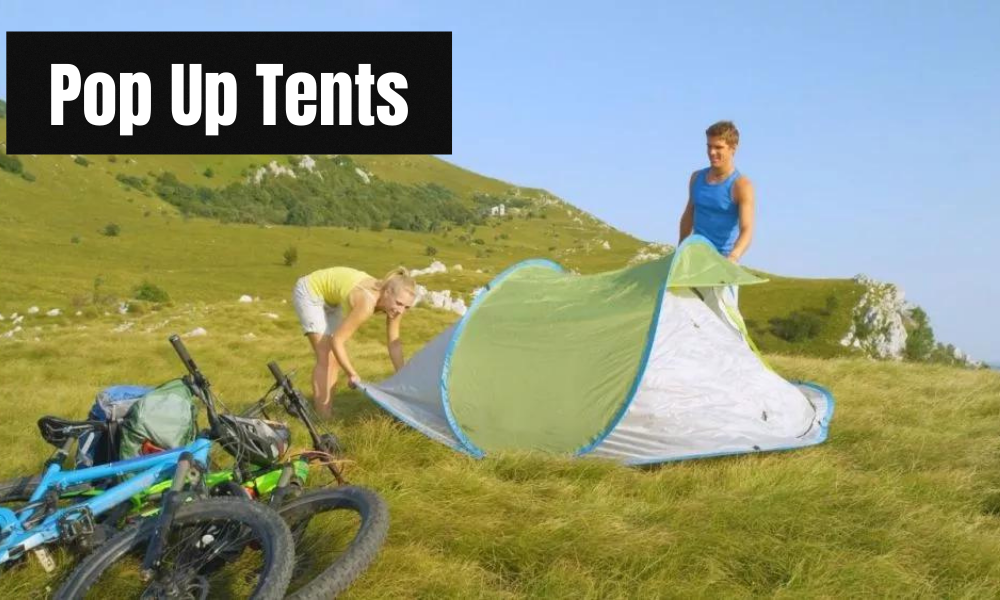
But beware: I almost knocked over one of my kids with a pop-up tent when I took it out of my bag – so be careful.
Once it’s up and set up, all you have to do is anchor it to the ground.
I said they’re easy to set up, but packing them up is another story!
You have to twist them in exactly the right direction or they won’t bend and fold.
Don’t do what I did: think like I can read everything and not the instructions. In the end I gave in and I studied the instructions.
Speaking of instructions, be sure to keep them in your tent bag because you don’t want to lose them. The better tents have pictures on the carry bag or sewn into the tent bag so you don’t lose them.
While pop-up tents tend to be lightweight, they are too bulky when you pack them on your back for hiking or packing. They can be nice and flat, but they are quite round.
Overall, they’re great for a weekend camp, but space inside is limited. They are quick and easy to set up, but require some patience when folding.
Pop-up tents are ideal when the children grow up and there is not enough space in the family tent. For the cheap price they offer an extra sleeping place and space for the kids to set up close to the main tent.
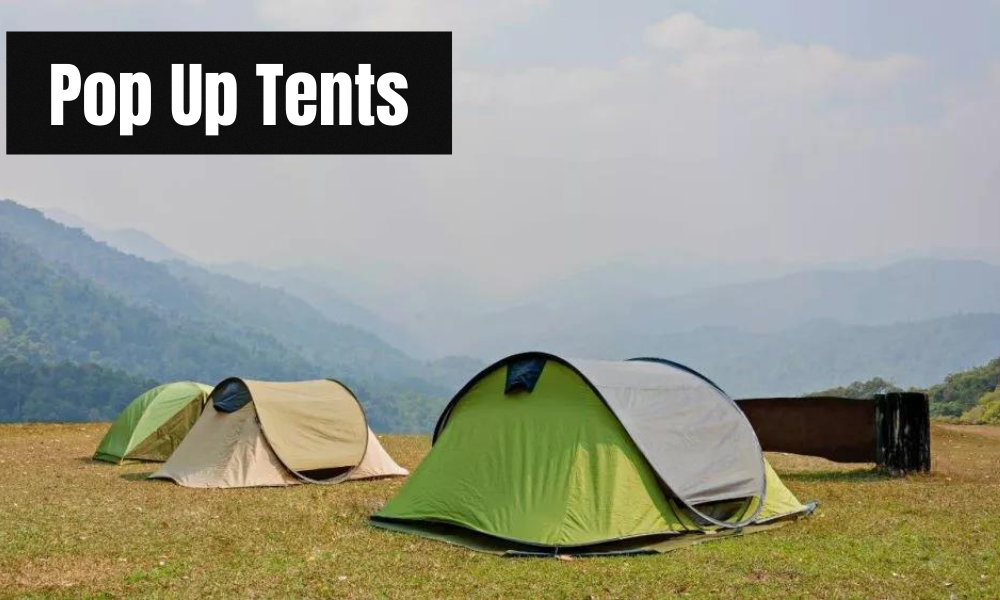
Pop up sun shelter tents are also ideal for the beach as they can be set up quickly. But you don’t have to buy an extra pop-up tent to protect against the sun, wind, rain, drifting sand and mosquitoes – a beach shell is usually better suited for this.
These tents are becoming increasingly popular because they come in a variety of brands, sizes and prices to suit most campers.
Large Family Tents
Some of the best tents in the luxury group are the larger family tents. They offer a lot of flexibility in that additional panels or walls can be zipped up to divide the tent into separate rooms or to use them as one larger room.
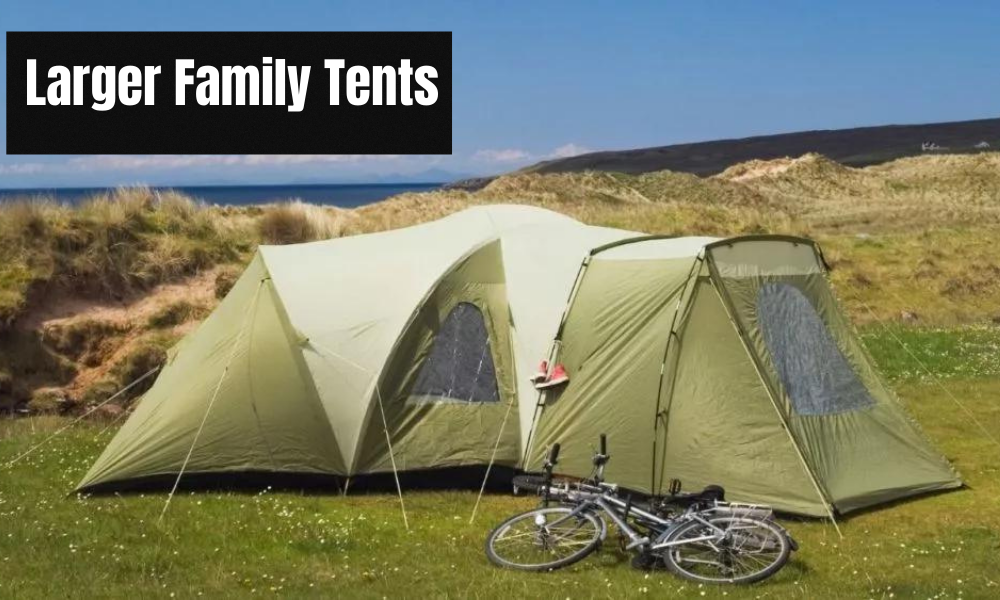
Front sections provide shelter to protect chairs and other camping gear from the weather. The awnings also provide additional shade in hot climates.
Most of the family tents are made of good materials as the larger build requires stronger walls, roof and materials. With more foot traffic, the tub floor will hold up well in the quality tents.
If you have a large family or many people in the camping group, a family tent is worth considering.
While they are heavier and require time and some strength to set up, the extra space and size make it worth it for large groups and longer stays.
Quick Tents, Quick Set-up Tents, Instant Tents And Instant Tents
Quick pitch tents are my favorite tents because they can be set up in minutes.
These tents are larger and more durable than the pop-up tents, but quicker to set up than traditional tents.
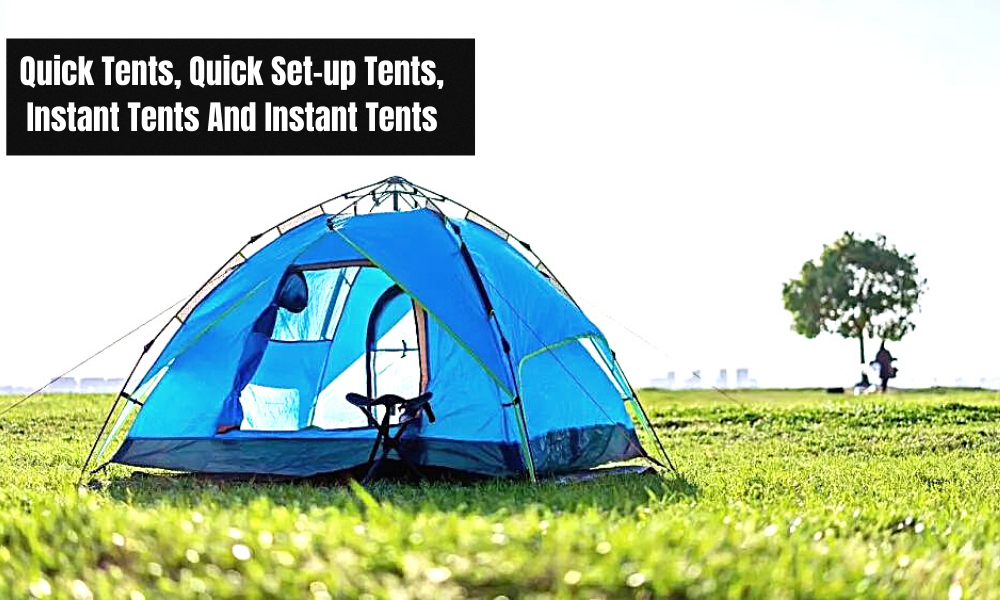
Most have a continuous frame that connects at the joints and you simply unfold the linkage. Then you throw the outer tent over it, tuck in the pegs and you’re ready to go.
The more modern, better quality instant tents are almost as strong as the build up tents.
The quick-pitch tent is worth considering for an unplanned overnight stay or for a planned camping holiday.
The tents pack down to a reasonable size and are as easy to pack as they are to set up.
One downside to quick pitch tents is that they can be more expensive for their sleeping size. However, in recent years they are becoming cheaper and approaching other types of tents in terms of size and price.
Canvas Tents
The older army style tents have no floor. They were heavy but also very stable. The poles are thick and strong, so they withstand strong winds well.
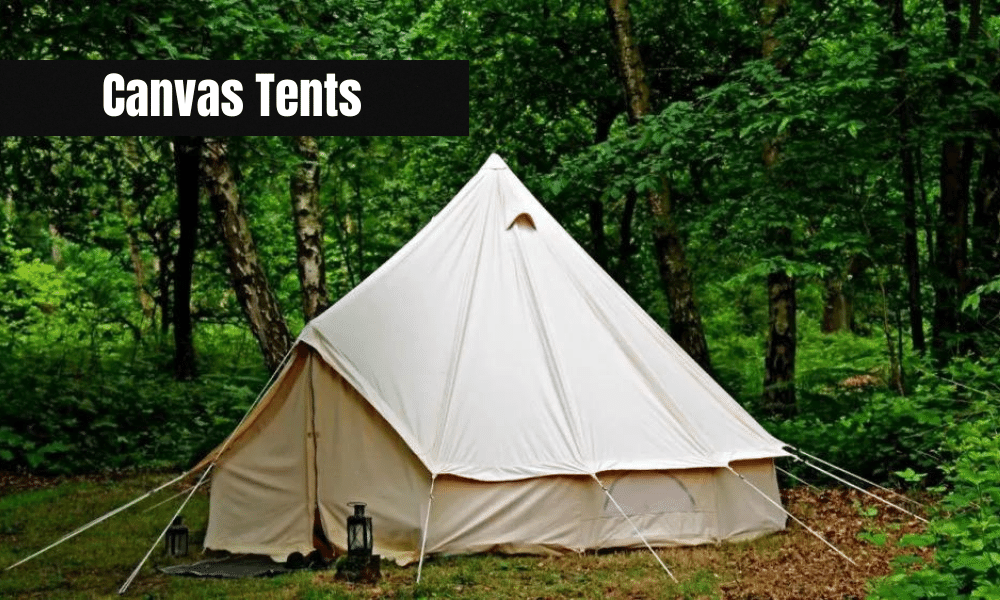
Some newer canvas tents have a built in tub floor, these tents are very strong and more durable than most materials.
For winter camping , they retain heat well inside the tent if you use a tent stove. But in summer it can get very hot without big windows.
A good canvas tent can last you years of camping, and if taken care of well , it can be passed on to the next generation of campers.
The disadvantage of a canvas tent is that it can be heavy and expensive. The good old canvas tent is a symbol of the old tent scene.
Swags For Camping
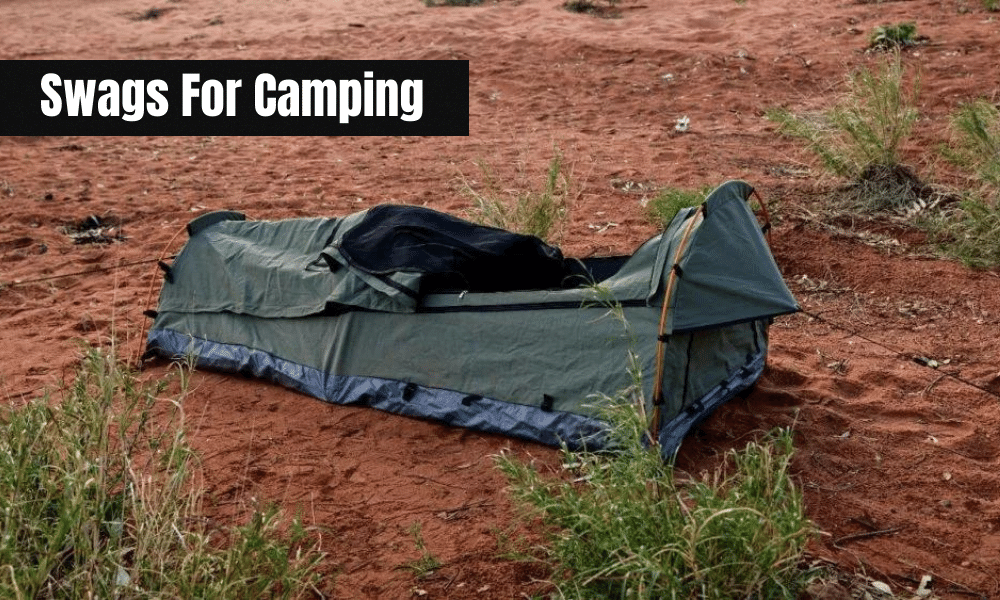
Swags are becoming increasingly popular in the camping scene.
Double swags, single swags, free standing swags, multiple doors, air vents and windows fitted with mosquito nets everywhere – the choices today are endless.
The swags from Oztrail , Dune Swags, Boab Swags, Burke & Wills Swags and Darche Swags are worth checking out.
The advantage of a swag is that the mattress and bedding can be rolled up into one. People seem to get a great night’s sleep in a swag.
Because of the small interior space, a swag can retain a lot of heat in cold areas.
Some of the double swags look more like mini tents.
Despite its popularity with camping, the swag, like most camping gear, has its drawbacks.
- Swags are heavy and bulky compared to their small interior space.
- Swags are not suitable for backpacking as they are too heavy.
- Swags can be expensive.
- Getting in and out of them on a rainy day can get you wet.
- Changing clothes in a swag is a hassle.
On hot days it can get very uncomfortable in a swag because of the limited space inside. Even if the air flaps are open. Some models are obviously better suited to hot weather than others.
If you understand the many limitations of swags, they could be a good choice for you.
Bivy Sacks
The bivy sacks are a great sleeping option for the minimal camper, hiker or bushcrafter .
They are basically a waterproof cover that is pulled over the sleeping bag and sleeping pad. Some have a flexible fiberglass pole. Others are designed to pull a storm flap over the head area.
Some bivy sacks have an insect repellent mesh in the hood.
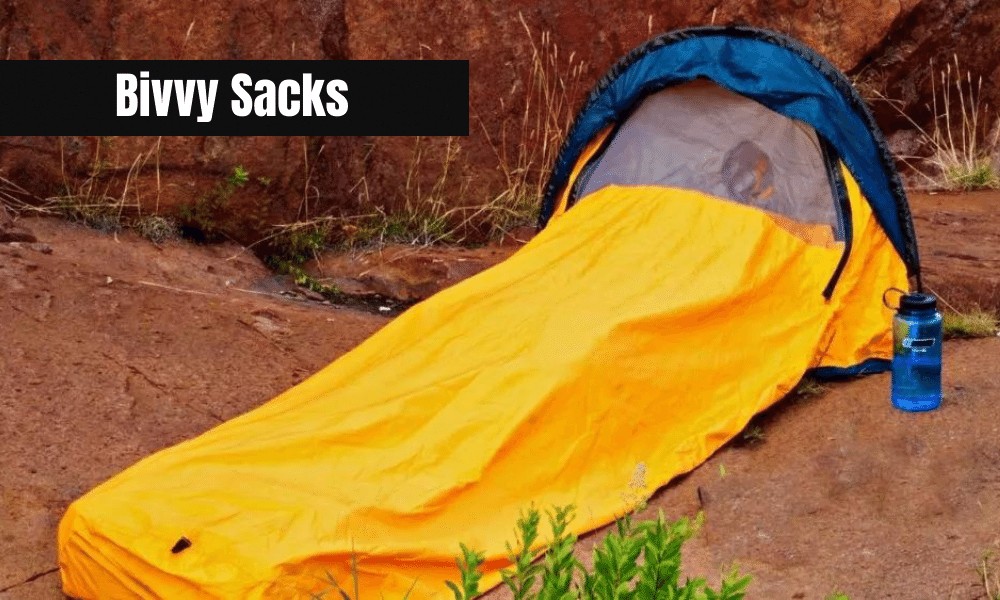
Due to their low weight, they are ideal for light backpackers, minimal campers and survivalists. They are also popular with military organizations around the world.
A disadvantage is that a good quality bivy sacks, e.g. with GoreTex material, can be expensive.
They can get very warm and sweaty on hot nights. You can also get wet when getting in and out on rainy days. However, if you set up a light tarp over them, they are a great option for light camping.
Roof Top Tents
Roof tents are placed on the vehicle roof. They attach to the roof bars and have an access ladder to get on and off.
Inside a rooftop tent is the mattress, much like inside a swag. An advantage is that the interior of the vehicle remains free, since the bedding is not in the vehicle.
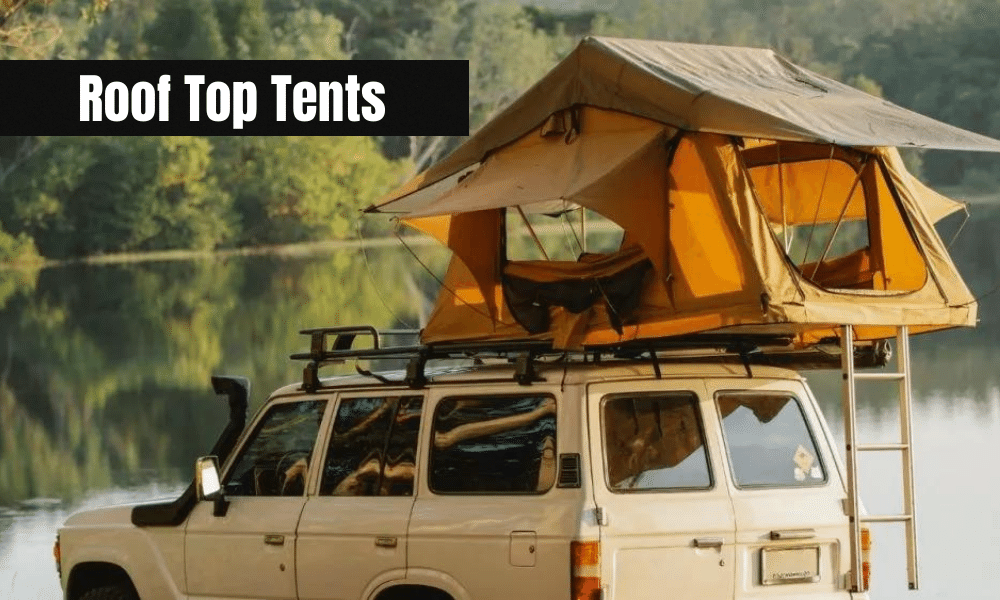
Some brands are easy to set up and even have an annexe that offers additional space.
For wet areas or where space is limited, rooftop tents are a promising idea.
If you are afraid of animals or if you are even traveling in areas with snakes or crocodiles, a roof tent is a safe option.
Some downsides to rooftop tents are that they can be heavy, so check your vehicle for the roof’s load-bearing capacity. The structure of the vehicle must be able to support not only the tent, but also the people sleeping in it.
Another downside is that it can get a bit uncomfortable on windy nights as the wind gets everywhere.
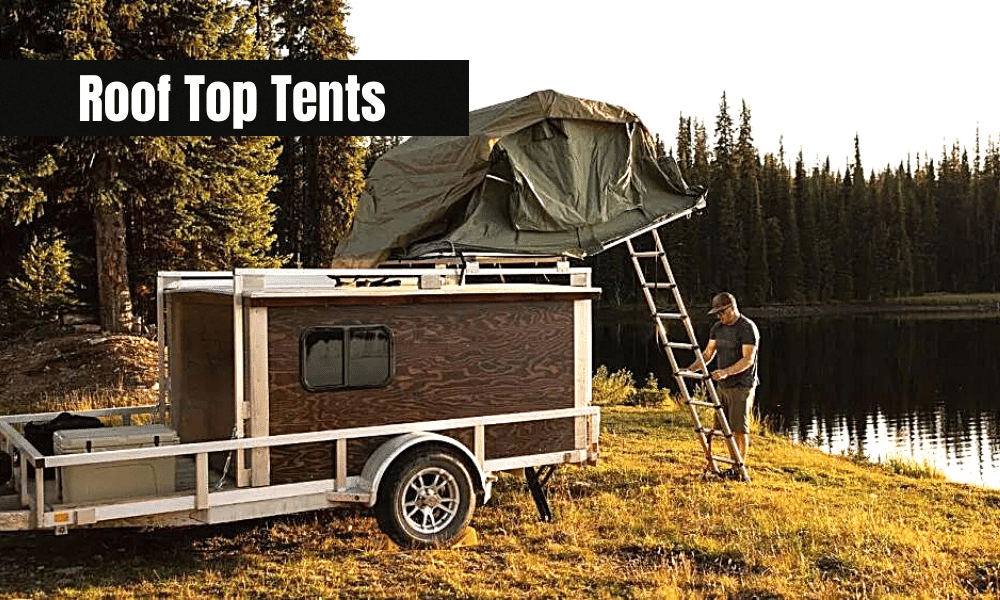
And certainly one or the other has to get used to a roof tent. Imagine you have to go to the toilet at night and forget that there is a two-meter drop?
Overall, however, the rooftop tent is a great way to save space.
Trekking Tents And Hiking Tents
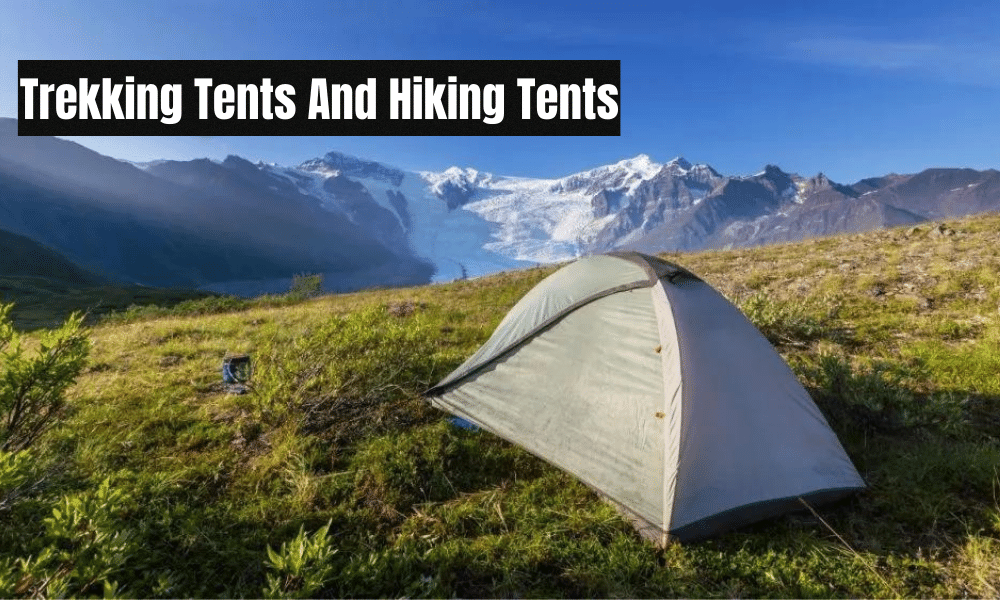
Trekking tents can be roughly divided into three unofficial categories such as: e.g.:
- Basic trekking tents that are light to moderate in weight and don’t cost too much. Ideal for the average backpacker.
- Lighter tents from well-known brands that are expensive.
- Ultra-light trekking tents that are made from feather-light materials but are expensive. Ultralight trekking tents are also used by specialized hikers who want to cover long distances as quickly as possible. Some tents use the trekking poles as tent poles to save weight. Every piece of camping gear is weighed and scrutinized to shave an ounce off the weight of hiking gear.
The quality of the basic trekking tents is getting better every year and the prices are cheap compared to twenty years ago as the market becomes more popular and more and more tent manufacturers are producing them.
With the ultra-light trekking tents, the materials are very thin and you have to be careful with some materials.
Geodesic Tents
This type of tent is by far the most technical type available on the market. Geodesic tents are tents designed for heavy expeditions and for the alpine area.
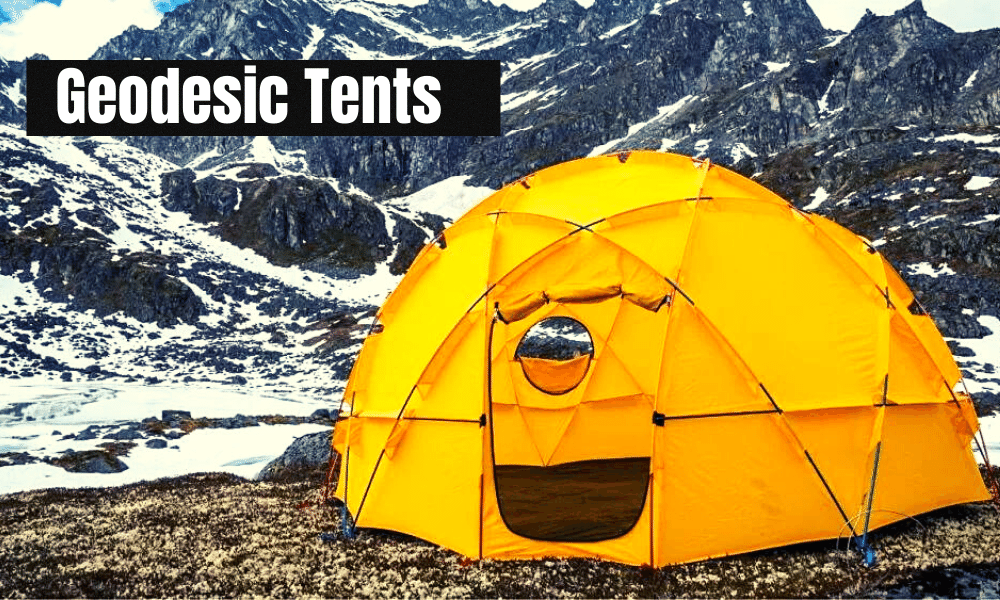
A geodesic tent is a mathematical term where lines intersect to form triangles. This tent uses multiple triangles in its shape, giving it extreme stability in harsh weather conditions.
These tents are made from premium fabrics that increase both comfort and cost. They are the preferred choice for trekking tours in alpine areas as they have to withstand strong winds and last a long time. Geodesic tents are the preferred choice for people climbing Everest.
Tents For The Different Seasons And Weather Conditions
Some manufacturers rate their tents based on the seasons. A two-season tent is z. B. suitable for good weather.
Here are the ratings of the categories in detail:
2 Season Tents
These tents are suitable for occasional use or when the children are sleeping in the garden. They are intended more for nice weather or a light shower – not a heavy rain shower.
They are usually very cheap, but the quality is often poor.
You can get some of the inferior tents in discounters or online shops. However, the discounters and other low-cost stores have had good tents on offer over the years, so you should keep an eye out for bargains there. However, you should not use these tents for very wet or cold areas.
Before you go to the remote forest in winter, set up the tent in the garden and spray it with water and see how it is inside and if it has any leaks.
3 Season Tents
Designed for use in spring, summer and fall (3 seasons).
These tents are designed to withstand worse weather and are generally of better quality than the two season tents.
Normally, this construction uses an outer tent, which offers better breathability against condensation and rain.
4 Season Tents
Here you will find better quality and they are suitable for all weather conditions. If you are not traveling in Antarctica, these tents are for you.
With these tents you get high-quality, state-of-the-art materials. The price of these tents is also higher now. Many good tents on the market are four season tents.
5 Season Tents
These tents are the most expensive, but they are designed to fight the weather in poor conditions.
Strong winds and blizzards? Five-season tents are made for the experienced traveler and explorer and for expeditions and the high mountains with extreme conditions.
Camping Tip: An Extra Tarp
An extra tarp or two ( what is a tarp? ) is always a great idea when camping, as you can set it up over the tent or entrance for extra protection.
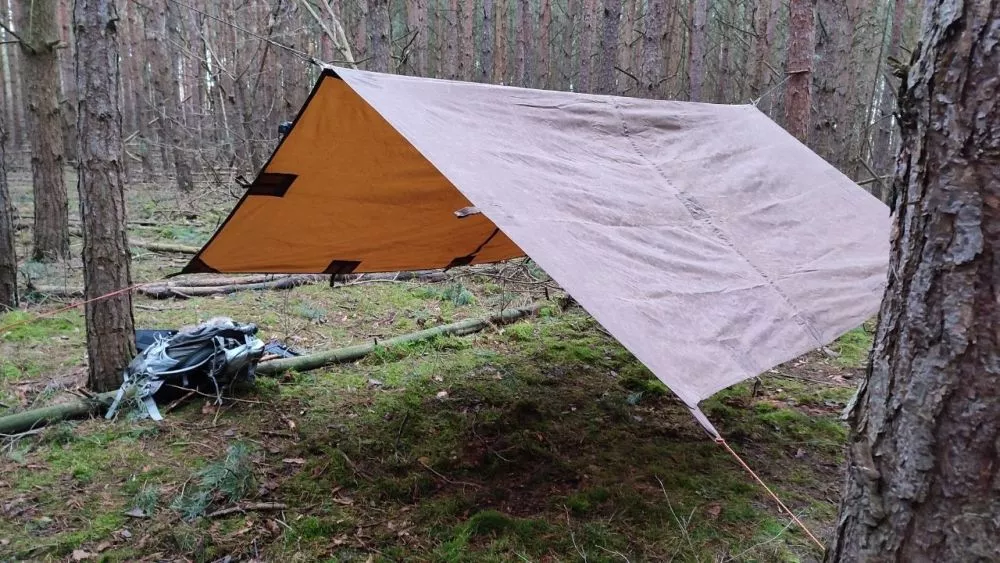
Or you can put a tarp on the ground of leaky tents to keep water out.
If the tarpaulin is hung next to the tent, it can be used as an additional covered space , e.g. B. as a kitchen area to cook your food there. Or just a place to relax on a rainy day instead of being stuck in a tent all day.
You can still store your equipment under the tarpaulin, so everything is protected from wind and weather.
In hot places, the tarpaulin can also be easily set up as additional shade .
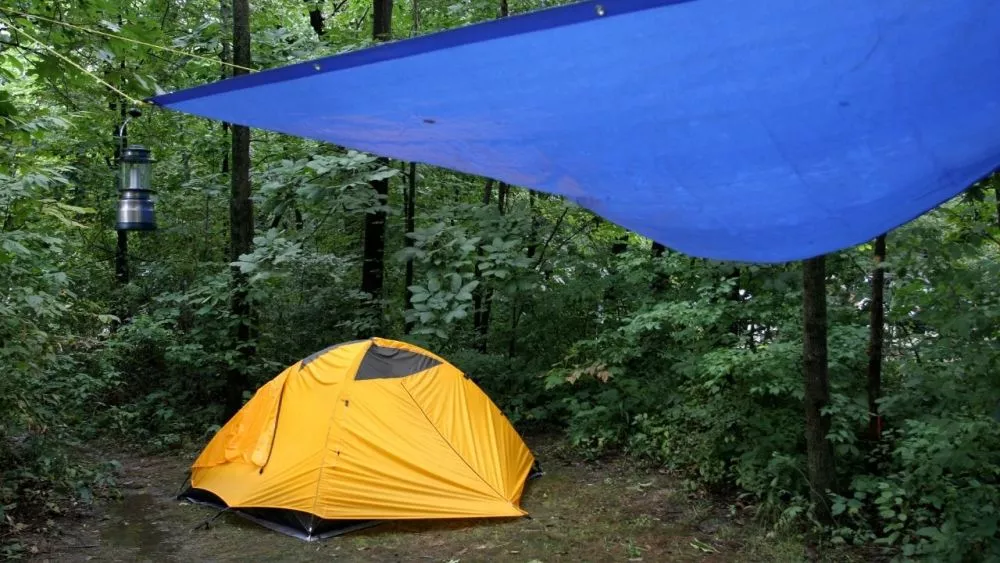
And sometimes it’s a great idea to put a small tarp under the tent floor when you’re packing up your tent. This is how you protect it from dirt, moisture and moisture. Because if you store your tent when it is wet, it starts to get moldy and you have to clean it laboriously.
With the tarpaulin underneath, you can pack the tent up properly and store it for a long time knowing it will be dry when you put it away.
In the end, all you have to do is dry and air the tarpaulin, which is much easier than drying the whole tent.
Conclusion – The Choice Of Tent
Hopefully I have given you a lot of good information about tents and what to look out for when buying a tent.
Also about the many designs and types of tents. such as Camping Swags, bivy sacks, trekking tents, roof tents, instant tents, family tents, etc. and the advantages and disadvantages of each type.
Now that you know what to look out for, you’ll probably be much better off finding the right tent.
